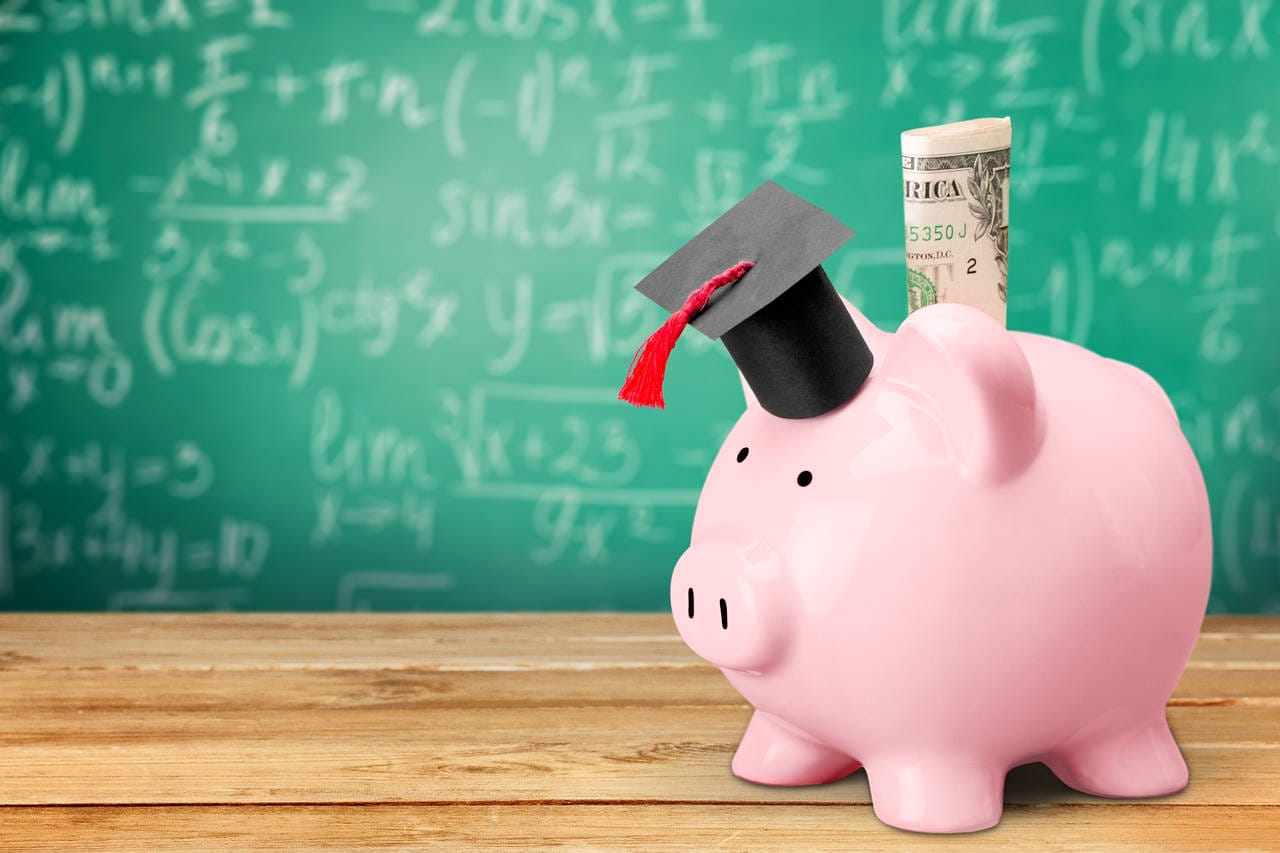If you’re a college graduate, you probably have a fair share of student loan debt. Whether you’ve been out of school for years or are about to earn that diploma, there are several ways to handle your student loan debt so you don’t feel like you’re drowning.

It doesn’t matter if making that monthly payment is a minor headache or a true burden — ignoring the problem is never the right answer. Instead, take control of your student loans by following these tips for keeping them on track, regardless of where you are in the repayment process.
12 Strategies for Managing Student Loan Debt
Graduating from college is a big milestone—but it often comes with a big financial reality check: student loan payments. Whether you’re months away from repayment or already making monthly payments, the right strategy can make a huge difference.
This guide breaks down 12 smart ways to stay in control of your student loan debt—from checking your loan terms to lowering your interest rate and finding forgiveness programs that could wipe out part of what you owe.
1. Know Your Loan Balance and Terms
Before you make a plan to repay your student loans, you need to know exactly what you’re dealing with. That means finding out who your loan servicer is, how much you owe, what your interest rate is, and what your monthly payment will be.
For federal loans, log into your account at StudentAid.gov to view your full loan information. If you have private loans, check your credit report at AnnualCreditReport.com to see the lenders and balances listed there.
Make a list of each loan with its interest rate, balance, and repayment term. If any of your loans were transferred to a different servicer, the credit report will help you identify the new contact info. Once you have all the details in one place, it’s easier to decide which repayment options make sense.
2. Make Payments During the Grace Period
Most federal student loans give you a six-month grace period after graduation before payments are due. But if you can afford it, start making payments during that time.
Even small payments during the grace period can make a big difference. If your interest isn’t subsidized, it starts building right away. Paying early helps prevent that interest from being added to your loan balance (also known as capitalization).
And if your interest is subsidized, your full payment goes straight toward the principal. That’s a rare opportunity to chip away at the balance before it starts growing. Starting payments early can also build good habits and make the transition into full repayment easier.
See also: 15 Ways to Pay Off Student Loans Faster
3. Create a Budget That Includes Loan Payments
You can’t manage student loan debt without knowing where your money is going. A solid budget keeps your payments on track and helps you avoid falling behind.
Start by listing your monthly take-home income. Then add up your fixed expenses—like rent, car payments, and student loans. Next, estimate what you spend on food, gas, and other essentials. Whatever’s left over can go toward savings and optional spending.
If money is tight, look for areas to cut back. That might mean eating out less, canceling unused subscriptions, or shopping for a cheaper phone plan. The goal is to make sure your student loans are always covered—without leaving you in a financial bind.
4. Apply for an Income-Driven Repayment Plan
If your federal loan payments are too high for your current income, an income-driven repayment plan could help. These plans cap your monthly payment based on your income and family size, not your loan balance.
There are a few different options, including:
- REPAYE and PAYE: Typically set your payment at 10% of your discretionary income.
- Income-Based Repayment (IBR): Usually 10% or 15%, depending on when you borrowed.
- Income-Contingent Repayment (ICR): The lesser of 20% of your discretionary income or a fixed 12-year plan.
These plans can lower your monthly payment and offer forgiveness after 20 or 25 years. Just keep in mind that extending your repayment period means you might pay more interest overall. Still, it’s a better option than falling behind on payments or going into default.
5. Consolidate Your Student Loans
If you’re juggling multiple student loans with different servicers and due dates, consolidation can make repayment easier. Federal loan consolidation combines your loans into one Direct Consolidation Loan, giving you a single monthly payment.
Student loan consolidation won’t lower your interest rate—it uses a weighted average—but it can extend your repayment term to reduce your monthly payment. That can be helpful if you’re struggling to keep up.
Just be aware that consolidating resets the clock on programs like Public Service Loan Forgiveness. And if you consolidate loans that already have qualifying payments, those payments won’t count toward forgiveness anymore. So weigh the pros and cons before you apply.
See also: Student Loan Consolidation vs. Refinancing
6. Explore Loan Forgiveness Options
Depending on your job or repayment plan, you may qualify to have some or all of your federal student loans forgiven. These programs aren’t automatic—you’ll need to meet specific requirements and apply—but they can wipe out a large portion of your debt.
Here are some of the most common options:
- Public Service Loan Forgiveness (PSLF): For borrowers working full-time at qualifying nonprofit or government jobs who make 120 on-time payments.
- Teacher Loan Forgiveness: Offers up to $17,500 in forgiveness for teachers in low-income schools after five full years of service.
- Income-Driven Repayment Forgiveness: Any remaining balance is forgiven after 20 or 25 years on an income-driven plan.
Some volunteer programs, like AmeriCorps and Peace Corps, also offer loan relief. These options don’t apply to private student loans, but if you work in public service, they’re worth looking into.
7. Refinance to Get a Lower Interest Rate
Refinancing means replacing your current student loans with a new loan—usually through a private lender—with a different interest rate and term. If your credit score has improved since you took out your loans, refinancing could save you money.
This strategy makes the most sense for borrowers with private loans or federal loans they don’t plan to use with forgiveness or income-driven repayment plans. That’s because refinancing federal loans turns them into private loans—and you’ll lose access to federal protections.
Still, if you’re on stable financial footing and don’t need those benefits, refinancing can lower your monthly payments or help you pay off your loans faster.
See also: Best Student Loan Refinance Companies of December 2025
8. Don’t Miss a Student Loan Payment
Late or missed student loan payments can hurt your credit score and lead to serious consequences like default or collections. Even one missed payment can stay on your credit report for years.
If you’re struggling to make a payment, don’t ignore it. Contact your servicer right away. You may be able to switch to a different repayment plan, request a deferment, or apply for forbearance.
The most important thing is to stay in communication. Lenders are often more flexible than borrowers expect—as long as you reach out before you fall behind.
9. Avoid Taking On New Debt
If student loans already take up a chunk of your monthly income, the last thing you need is more debt. Every new credit card balance or personal loan just adds to your financial stress—and makes it harder to stay on top of your student loan payments.
Before you borrow more, ask yourself if it’s absolutely necessary. Charging groceries or covering rent with a credit card might solve a short-term problem, but it creates a long-term one. Whenever possible, live below your means and keep new debt off the table.
The more disciplined you are about avoiding extra balances, the sooner you can make real progress on the loans you already have.
10. Pay Off High-Interest Debts First
Student loans usually come with lower interest rates than credit cards or personal loans. If you’re carrying balances on other high-interest debt, make those your top priority.
You can use either the debt avalanche method (pay off the highest-interest debt first) or the debt snowball method (start with the smallest balance). Either way, make at least the minimum payment on your student loans while aggressively paying down costlier debts.
Once your high-interest balances are gone, you can redirect that extra money to speed up your student loan repayment.
See also: Debt Snowball vs. Debt Avalanche: Which Method Works Best?
11. Increase Your Monthly Income
If cutting expenses isn’t enough to ease the pressure, bringing in more income can help. Even a few hundred extra dollars a month can make a big difference when you’re paying down student loans.
Consider picking up a part-time job, freelancing, or doing gig work like driving for a delivery app. You can also look for ways to make money from your skills—tutoring, graphic design, or writing, for example.
If you’re in a full-time job, ask about overtime or a promotion. The goal is simple: grow your income so your loan payments take up a smaller slice of your budget.
12. Deduct Your Student Loan Interest
When it’s time to file your taxes, don’t overlook the student loan interest deduction. If you paid interest on a qualified student loan during the year, you may be able to deduct up to $2,500 from your taxable income.
This is an “above-the-line” deduction, which means you can claim it even if you don’t itemize. You should receive a Form 1098-E from your loan servicer showing how much interest you paid.
There are income limits, so not everyone qualifies. But if you’re eligible, this deduction can lower your tax bill and give you a little more breathing room in your budget.
Average Student Loan Debt in the U.S.
More than 42 million Americans carry federal student loan debt, totaling $1.617 trillion. That makes up over 90% of all student loan debt in the country.
The average balance on federal loans is $37,787. When private student loans are included, the average total balance rises to roughly $40,780. For many borrowers, that level of debt shapes major financial decisions for years after graduation.
A big reason balances grow over time is interest—especially on unsubsidized or private loans. To see how your rate compares, check out the average student loan interest rate in 2025.
Final Thoughts
Student loan debt doesn’t have to hold you back. With the right plan—and a few smart moves—you can manage your payments, lower your costs, and maybe even get some of your balance forgiven.
Every step you take, from refinancing to side hustling to applying for an income-driven repayment plan, moves you closer to freedom. Don’t wait for the perfect moment. Start where you are, and take the next step today.
Frequently Asked Questions
What happens if I miss a student loan payment by a few days?
If you miss a payment by just a few days, your loan typically won’t be reported as late right away. Most federal loan servicers offer a short grace window before reporting to the credit bureaus. However, interest may still accrue, and you could face late fees depending on your loan type.
If you know you’ll be late—even by a few days—contact your servicer immediately. Many will work with you to adjust your due date or help you catch up without penalties.
Can I pay more than the minimum on my student loans?
Yes, and it’s one of the best ways to pay off your student loans faster. When you pay more than the minimum, that extra amount goes toward your principal—as long as you tell your servicer to apply it that way.
Without that instruction, they may apply it to next month’s payment instead. You can usually specify this preference in your online account or by calling customer service.
Will paying off my student loans early hurt my credit score?
No—paying off your student loans early will not hurt your credit score. In fact, it may help over time by reducing your total debt and improving your debt-to-income ratio. Just keep in mind that closing a long-standing loan can slightly affect your credit mix or average account age, but the impact is typically small.




